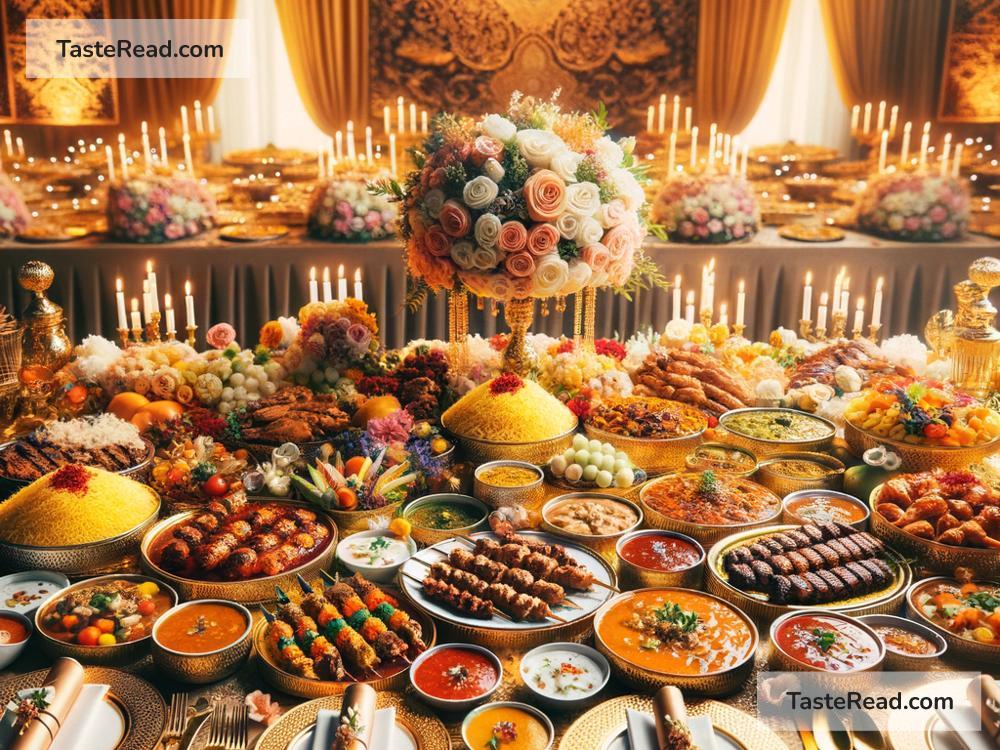The Role of Saffron in Persian Wedding Feasts
Persian weddings are known for their vibrant colors, deep traditions, and delicious feasts. These celebrations are often grand, bringing together family and friends to celebrate love and unity. Among the many elements that make Persian weddings special, saffron plays a unique and important role in the wedding feast. This golden spice has been cherished in Persian cuisine for centuries and is considered a symbol of wealth, happiness, and prosperity—qualities that align beautifully with the joyous occasion of a wedding.
What is Saffron?
Saffron is a precious spice derived from the delicate flower of Crocus sativus. Each flower produces three red stigma threads, which are carefully handpicked and dried to form saffron. It is often referred to as “red gold” because of its rich color and steep price. In fact, saffron is one of the most expensive spices in the world due to the labor-intensive harvesting process and its relatively low yield.
Persians have used saffron for generations, both in their cooking and for its medicinal properties. The spice is celebrated not only for its vibrant color and unique flavor but also for the sense of luxury it brings to food and life in general.
Persian Wedding Feasts: A Celebration of Culture and Food
In Persian culture, weddings are more than just a union of two individuals—they represent the joining of two families. They are lavish affairs where every detail of the ceremony and feast is carefully planned to delight guests and honor tradition. Food plays a central role in the celebration, and the wedding feast is seen as an expression of love, generosity, and respect for guests.
Saffron, as the jewel of Persian cuisine, naturally takes center stage at the wedding table. It is used in many dishes to enhance their flavor and appearance, making the meal even more memorable.
Saffron’s Significance in Persian Tradition
In Persian culture, saffron is seen as a symbol of happiness, good fortune, and life’s blessings—all of which are crucial to marking the start of a marriage. Its rich golden hue is associated with prosperity and hope for a bright future. Incorporating saffron into the wedding feast is a way of wishing the newlyweds a life filled with abundance and joy.
Beyond its symbolism, saffron also has a calming and uplifting effect. Ancient Persians believed that saffron had healing properties and could bring emotional balance, making it an apt ingredient for an occasion as significant as a wedding.
Saffron in Persian Wedding Dishes
Saffron is used in a variety of Persian dishes, especially during special occasions like weddings. Here are a few popular saffron-infused dishes often found at Persian wedding feasts:
-
Chelo (Persian Rice)
Persian rice, or Chelo, is the star of most Persian meals, and a wedding feast is no exception. Saffron is used to dye portions of the rice a bright golden-yellow color, creating a stunning contrast with the white rice. The fragrant aroma and vibrant appearance elevate this dish, making it worthy of a celebration. -
Zereshk Polo (Barberry Rice with Saffron)
A favorite dish at Persian weddings is Zereshk Polo, a combination of basmati rice, saffron, and tart barberries. The saffron not only gives the rice its golden hue but also adds a subtle floral taste that complements the tartness of the barberries. This dish is often paired with saffron-cooked chicken or lamb. -
Shirin Polo (Sweet Persian Rice)
Another popular rice dish is Shirin Polo, or “sweet rice.” This festive dish combines saffron with a mixture of nuts, dried fruits like orange peel and raisins, and rosewater. Its sweetness symbolizes the sweet beginning of the couple’s life together. -
Saffron Tea and Desserts
Saffron is not limited to savory dishes—it also shines in desserts and beverages served at Persian weddings. Baklava, Sholeh Zard (saffron rice pudding), and saffron ice cream are common sweet treats enjoyed by guests. Additionally, Saffron Tea is often served as a warming, aromatic drink, helping people unwind after a hearty meal.
The Importance of Craftsmanship and Quality
In Persian wedding dishes, the saffron’s quality matters just as much as its presence. Only the finest, pure saffron threads are used to ensure exceptional flavor, aroma, and color. Preparing saffron dishes requires careful craftsmanship, from properly blooming the saffron in hot water to incorporating it delicately into each dish. Persian chefs take pride in their art, and their expert use of saffron showcases their dedication to excellence.
A Symbol of Persian Hospitality
In Persian culture, hospitality is a cornerstone of social life, and the wedding feast reflects this deeply held value. By generously using saffron to create beautiful, flavorful dishes, the hosts honor their guests with the finest ingredients and show their care and respect. Serving saffron-infused foods is more than just offering a meal—it’s a way of sharing joy, love, and gratitude during one of life’s most meaningful celebrations.
Conclusion
Saffron has a central role in Persian wedding feasts, embodying the beauty, richness, and warmth of Persian tradition. Its golden hue symbolizes happiness and prosperity, while its luxurious flavor and aroma add a touch of magic to the occasion. From vibrant rice dishes to sweet desserts, saffron transforms the wedding table into a feast of love and celebration. For the newlyweds, saffron-laden dishes serve as a delicious blessing for the beginning of their lifelong journey together, making this precious spice truly unforgettable in Persian weddings.


